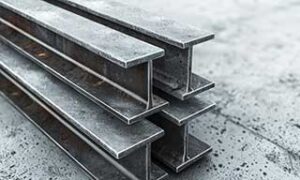
Scaling a business is tough in any sector. There will be challenges, hurdles, and hiccups, but with a little guidance and a lot of persistence, growth will come.
If you have your sights set on the future and on growing your steel fabrication business, here are a few tips that will ensure you stay on the right track.
The Right Workers for the Right Jobs
Are you getting the most out of your employees? Are highly skilled and experienced workers being given more demanding tasks, or are they working alongside low-skilled employees?
Employees are the lifeblood of your business, so reward the best workers with more responsibility and give inexperienced employees the encouragement they need to improve.
Check Your Workflow
The smallest changes can sometimes make the biggest differences. For instance, rearranging stock items could boost productivity by reducing the time it takes to move finished products or raw materials around the facility. Adding new roles or introducing new tools could increase employee productivity, thus boosting output and improving your bottom line.
Analyze each prospective change, monitor progression, and make small but noticeable improvements wherever you can.
Maintain or Buy
Replacing or even fixing metal fabrication equipment can be expensive, but a substantial outlet now could save you a small fortune in the future. Don’t ask your employees to make do with old, poorly maintained machines when an upgrade could make life easier for them while improving output.
Fabrication machinery has come a long way in the last few years. Machines are faster and more efficient. More importantly, many of them are partially or fully automated, reducing operator costs.
Drive Growth Through Innovation
The metal fabrication business is constantly changing as it seeks to meet evolving customer demands while dealing with supply and operational issues. A successful business is one that can find a way to grow without scarifying the needs of its customers or its bottom line.
So, as the industry changes, whether it’s as a result of rising costs or changing trends, you must grow with it. Keep your finger on the pulse and always be prepared to make necessary charges.
Keep an Eye on Your Profit Margins
The metal fabrication sector is not exactly known for having substantial profit margins. They are fractional, at best, and if you don’t keep an eye on them, you’ll be one unforeseen disaster away from financial ruin.
Monitor every income and every expense. Account for every cent, and perform regular adults to see if there are any areas where you can save more, including storage, maintenance, production, raw materials, and operations.
Make Sure You’re Using the Right Tools
A skilled workforce is only one piece of the puzzle when it comes to operating a metal fabrication business. You also need to make sure your employees are being used in the right areas, and that their efforts are supported by the right tools and software.
State-of-the-art enterprise resource management software (ERP), as provided by RealSTEEL, offers the solutions that a metal fabrication business needs to organize, manage, and grow. When properly utilized, this software will boost productivity and efficiency by allowing companies to track inventory, manage financing, assist with production, and increase operational efficiency.
What Do I Need to Create a Metal Fabrication Business Plan?
A business plan is essential if you’re thinking about launching a new company, but it can also help if you’re considering a major capital investment, giving you some perspective and clarifying your needs and goals.
The steps to creating a successful, detailed metal fabrication business plan are much the same as they are for any other manufacturing-orientated business plan:
- Define your audience: Who will be buying your products? Where will you focus your marketing efforts?
- Perform a market analysis: Is there a need for the services you will provide? How big and profitable is that need?
- Determine which services you will provide: Including grinding, cutting, welding, and repairs.
- Consider equipment and employees: What machines will you need to buy/rent? How many employees are needed to operate them?
- Clarify your marketing goals: What platforms will you use, and how will you attract new customers?
- Analyze your competition: They’ve been there, done that, and got plenty of t-shirts. Study them. Learn from their successes and failures.
- Create a financial plan: Consider the cost to launch and run the business, as well as how you will raise the capital.
Summary: Grow Your Business and Boost Fabrication Profits
Change is constant in the metals fabrication sector, and if you want your business to thrive, you must be prepared to adapt to these changes. You don’t grow by standing still, so make sure your business has the best software, the latest tools, and the direction and guidance it needs to move forward.
For more information on software innovations that can drive your metals fabrication business forward, take a look at RealSTEEL from the Wolcott Group.
FAQs about Growing a Metal Fabrication Business
What is the average profit margin in a fabrication business?
The average profit margin in the fabrication industry is around 4%. There is clearly no room for error, and that’s why it’s important to implement ERP systems that can track inventory, order supplies as and when they are needed, ensure invoices are paid in a timely fashion, and increase productivity in all areas of the business.
What are the biggest obstacles preventing growth in a metal fabrication business?
Right now, one of the biggest obstacles facing metal fabrication businesses is the rising cost of raw materials due to inflation and world events. Supply issues are also common, as we saw in 2020/21 when the world went into lockdown and supply lines ground to a halt.
How to start a fabrication business?
First, you need a business plan, as outlined above. You’ll also need the capital or the means to raise it. It can be an expensive business, but not if you start small, do most of the work yourself, and then scale gradually from there.




